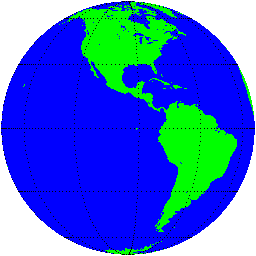

John C.
Polking
Rice University
The material on these pages was the text for part of the Advanced Mathematics course in the High School Teachers Program at the IAS/Park City Mathematics Institute at the Institute for Advanced Study during July of 1996.
Teachers are requested to make their own contributions to this page. These can be in the form of comments or lesson plans that they have used based on this material. Please send email to the author at polking@rice.edu to inquire. Pages can be kept at Rice or on your own server, with a link to this page.
Putting mathematics onto a web page still presents a significant challenge. Much of the effort in making the following pages as nice as they are is due to Dennis Donovan. Boyd Hemphill added two nice appendices. Susan Boone helped construct the Table of Contents. All of them are teachers and members of the Rice University Site of the IAS/Park City Mathematics Institute.
We will study the incidence relations between great circles, the
notion of angle on the sphere, and the areas of
certain fundamental regions on the sphere, culminating with the area
of spherical triangles.
Our ultimate goal is two very nice results. First we will
prove Girard's Theorem, which gives a formula for the sum of the
angles in a spherical triangle. Then we will use Girard's Theorem to
prove Euler's Theorem that says that in any convex, three dimensional
polyhedron we have V - E + F = 2, where
V ![]() is the
number of vertices, E
is the
number of vertices, E ![]() is the number of edges, and F
is the number of edges, and F
![]() is the number of faces.
is the number of faces.
 |
The next section contains a discussion of the basic properties of the sphere. |